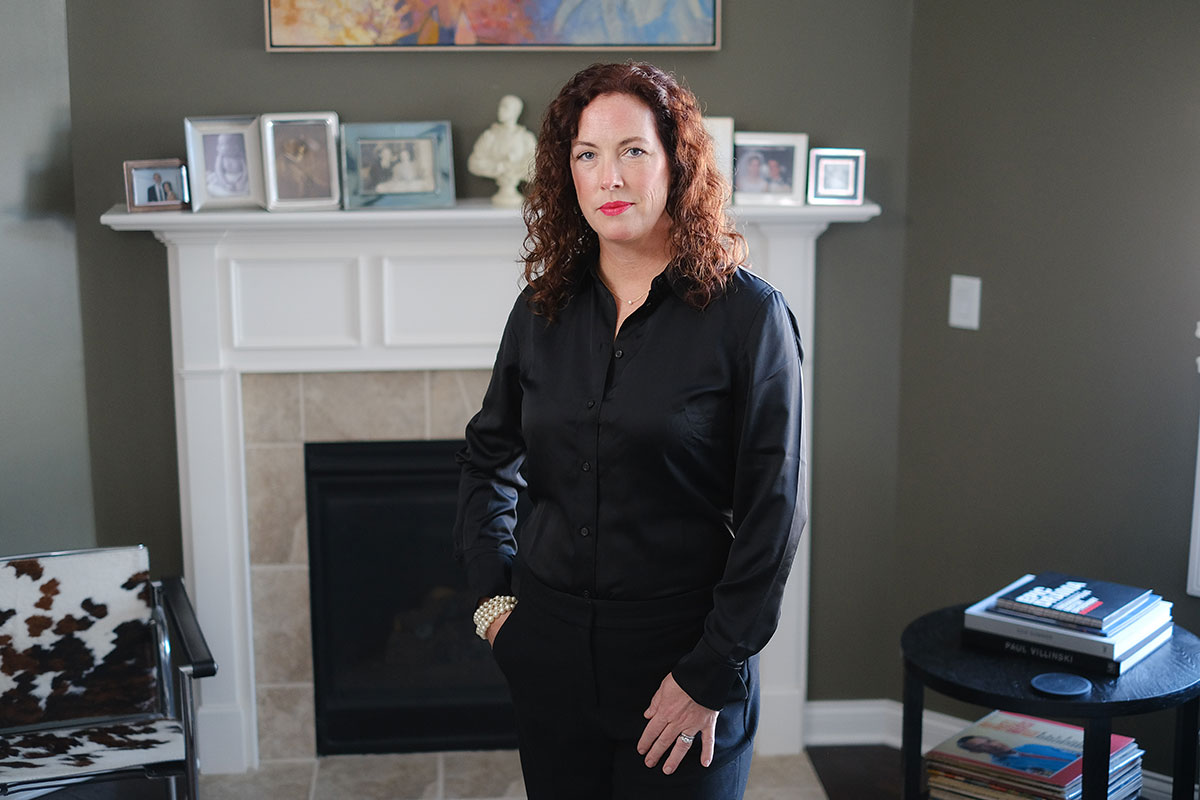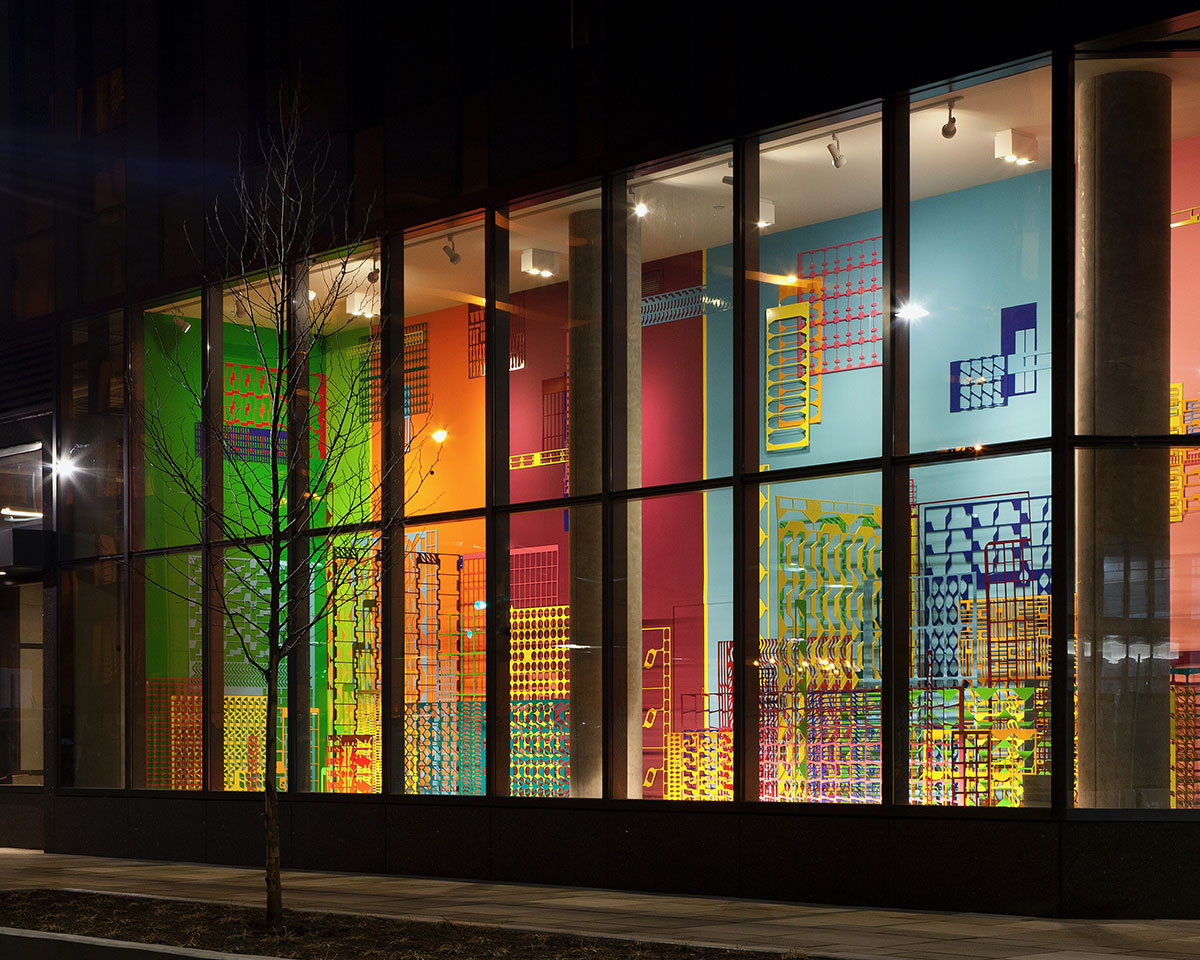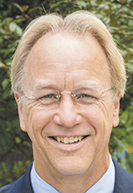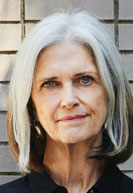Subscriber Benefit
As a subscriber you can listen to articles at work, in the car, or while you work out. Subscribe NowIf Mindy Taylor Ross’ plans work out, the new global headquarters of Elanco Animal Health Inc. at the former General Motors stamping plant downtown will showcase a large expression of art. Another piece will be on display at the new Signia Hotel project at Pan Am Plaza.
Ross, founder of Carmel-based Art Strategies LLC, has been tasked with facilitating an outdoor artwork for the Elanco campus. The budget could be about $640,000, thanks to the city’s “percent for art” program that requires real estate developers who receive tax-increment-financing money to dedicate 1% of the funding to public art.
Known as the Public Art for Neighborhoods ordinance, the program calls for developers to either place artwork on site or deposit an equivalent amount into a fund for public art projects elsewhere in the city. Elanco, which received $64 million in TIF funding, has the largest compliance commitment since the program took effect in 2016. Ranking second is the 16 Tech innovation district, with $320,000 earmarked for public art.
“We’re hopeful we can work with Elanco to make a really great gesture for that side of downtown and to show people the difference that can make,” Ross said. “Art makes a difference in humanizing the built environment.”

Ross made her name as the curator of public art in the city. From 2005 to 2009, Indianapolis hosted large-scale temporary exhibitions of sculptures by Tom Otterness, Julian Opie, Chakaia Booker and George Rickey. Ross created the series when she worked at the Indy Arts Council.
Brian Payne, CEO of the Central Indiana Community Foundation from 2000 until his retirement in 2023, credits momentum generated by those exhibitions for the presence of public art on the Indianapolis Cultural Trail, which opened in 2013. Payne founded the trail and hired Ross to be its public art project manager.
Opie’s “Ann Dancing,” installed at the intersection of Massachusetts Avenue and Vermont and Alabama streets, was commissioned for the cultural trail and has become an Indianapolis landmark.
Through Art Strategies, which will mark its 20th anniversary this year, Ross works with civic, corporate and residential clients to help them find the right paintings, sculptures and other works for display.
In addition to the Elanco project, Ross is involved with the 40-story, 800-room Signia by Hilton hotel under construction at Pan Am Plaza. The city took over the Signia project after developer Kite Realty Group Trust said it was unable to secure favorable enough interest rates for the hotel to justify financing the project itself.
The project is set to receive $155 million in TIF funding, or more than twice the Elanco amount. Because of the Signia’s unusual status as a city project, it’s unclear whether the Public Art for Neighborhoods ordinance—triggering a possible outlay of $1.5 million, in this case—will apply.
Andy Mallon, executive director of the Capital Improvement Board of Managers, told IBJ it’s too early to address the art budget. The hotel is projected to open in 2026.
Indianapolis-based Ratio Design is the architect, and Ratio CEO Bill Browne said he’s optimistic about Ross’ securing a significant artwork for the Signia.
“We’ve talked about trying to do an important piece on the exterior,” Browne said. “We’ve identified a couple of places for that. We’ll see how this shakes out.”
Ross said she views the hotel as a prime candidate for Public Art for Neighborhoods funding.
“What better demonstration project than the city itself?” she said.
Artwork facilitated by Ross fills the Cummins Inc. global distribution headquarters, 301 E. Market St., that opened in 2017. She also curated the art for Cummins facilities in Columbus and Beijing.
Former Cummins CEO J. Irwin Miller is remembered for his role in making Columbus an unlikely hotbed of cutting-edge architecture. Miller, who died in 2004 after serving as the engine manufacturer’s top executive from 1947 to 1977, enlisted A-list architects to design more than 50 public and private buildings in the city 45 miles south of Indianapolis.
Ross described her association with Cummins as a “joy.”
Corporate clients, she said, generally want to create an attractive workplace that reflects the company’s identity.
“It’s about creating a workplace to attract and retain the very best talent they can,” Ross said. “It’s also about underpinning their brand. Creating a workplace that in different ways reinforces the brand and their mission, vision and values.”
The collaborator
Browne first worked with Ross on the Cummins distribution headquarters project. New York-based firm Deborah Berke Partners, now known as TenBerke, designed the building with Ratio as the local architect of record.
Ross represents an important bridge, Browne said, between artists and architects.
“The artist advocate needs to have an understanding of how the art and the architecture integrate together, as opposed to an artist who is trying to create an object without regard to the place,” Browne said.
Berke, who also serves as dean of the Yale School of Architecture in New Haven, Connecticut, said Ross understands space and how it is used.
“In some ways, architects tend to be purists,” Berke said. “It’s, ‘I made a beautiful building with a lot of beautiful rooms in it, and they’re perfect just the way they are.’ You want to work with somebody like Mindy, who appreciates the quality of the architecture and sees what art will do with it, not against it.”
Ross is an executive member of the Association of Professional Art Advisors, a New York-based organization of more than 170 curators who emphasize ethical practices in the global art market. According to a report published by Art Basel, the global art market totaled $67.8 billion in 2022.
Knowledgeable curators, Ross said, assist some of the world’s most successful companies.
“These quality-of-life and quality-of-space things that some companies are doing make a huge difference,” she said. “That’s why Google is Google and Apple is Apple. They have extensive art programs and a high focus on design. It’s because they acutely understand the link between creative thinking and creative problem-solving.
“A lot of large companies like to throw around the word ‘innovation.’ But in order to innovate, you have to have people who are thinking creatively and creatively problem-solving. There are professional people out there who can help. It’s just being brave enough to do it.”
At the Cummins distribution headquarters, more than 60 artworks were secured for the nine-story office tower. Highlights include Kendall Buster’s “Torque Moment Torque Momentum” sculpture hanging in the lobby and Odili Donald Odita’s abstract painting “The Wisdom of Trees” that spans multiple floors and is best viewed from outside the building.
“If you’re putting art in a corporate meeting room, you don’t want the art to undermine the goals of productive meetings,” said Berke, named to Architectural Digest’s “AD100” Hall of Fame in 2022. “At a place like Cummins, that would really matter. But you don’t want it to be so banal that people stop seeing it. Finding that right balance that provokes thought and hopefully contributes delight is a valuable contribution to an office building or to somebody’s home.”

First-person education
Ross, 49, isn’t a studio artist. She first studied engineering when she enrolled at the University of Southern California.
When the Virginia native had room for an elective course during the second semester of her freshman year, she selected an art history course based on ancient Asian art. Ross enjoyed it enough to abandon her engineering path for an art history degree focused on Roman-Greco antiquities.
With limited post-graduation options, Ross moved into a guest house on Florida’s Captiva Island, near Fort Myers, where her mother was spending a winter.
Pop art icon Robert Rauschenberg, known for mixed-media work that at times included tire tracks, made his home on Captiva Island. Rauschenberg befriended Ross, the holder of an art history degree who wasn’t using it.
This connection led Ross to Henry and Jane Eckert, who opened an art gallery in Indianapolis in 1973 and expanded to Naples, Florida, in the mid-1990s.
Hired to become the director of the Naples gallery, Ross met her future husband, fellow Eckert employee Jim Ross, as well as accomplished sculptor and Indianapolis native Don Gummer.
“Don and I have been friends ever since,” Ross said. “He would send me books to read. He knew I had never been in the commercial art world.”
In 2016, Ross served as curator of a Gummer public art exhibition, “Back Home Again,” in Indianapolis.
If a lack of studio artist experience represented a liability early in Ross’ career, it’s meaningless decades later, she said.
“I was lucky to have artists like Don and Bob, who opened their studios to me and had conversations with me,” Ross said.
A resident of central Indiana since 2003, Ross said her work on the cultural trail and “Ann Dancing” ranks as a career highlight.
“It’s incredibly rewarding to have a project of mine essentially become what we call in the industry a ‘new landmark,’” she said.

Productive path
What can $640,000 buy in the realm of public art?
In 2024 dollars, the amount that could be available for an Elanco artwork might be considered modest, according to Ross.
In 2007, more than $550,000 was raised to underwrite the cost of purchasing three Otterness bronze sculptures for permanent installation near the Indiana Convention Center.
In 2008, the total cost for Opie’s “Ann Dancing” was approximately $150,000. Money for the LED sculpture was well spent, cultural trail founder Payne said.
“I’ve seen small groups of five or six people start dancing with ‘Ann,’” Payne said. “It’s super interactive. It really captures people’s imagination. I love seeing it on national TV. I see it in articles about Indianapolis all the time.”
Payne praised Ross for her ability to navigate costs and deadlines.
“Mindy is remarkable at being an art historian, deeply understanding the artist and being an incredibly skilled project manager,” he said. “She drives things on budget and on time while interacting with artists.”
One artwork planned for the cultural trail was mired in controversy and never made. Today, however, Ross and Payne characterize Fred Wilson’s “E Pluribus Unum” as a success for the questions and learning it inspired.
Wilson, a Black artist based in New York, makes artworks to encourage examinations of history, culture and race.
Commissioned for $325,000 in 2011, Wilson’s sculpture was designed to present a freed enslaved man, originally depicted on downtown’s Soldiers and Sailors Monument, away from the monument in what the artist described as “new context.” The sculpture failed to gain community support, and opponents labeled the idea offensive.
“Even though we had all the right intentions in doing that, I, as the lead of the cultural trail, did not have … the expertise and the deep relationships in the Black community at the time,” Payne said. “That challenge with Fred Wilson and the community process was the beginning of my journey into an understanding of racial equity and partnership.”
In 2018, the CICF formally changed its mission to support racial equity and inclusion and to dismantle institutional racism in central Indiana.
Ross said she’s proud of “E Pluribus Unum.”
“A lot of art historians think that project is Fred Wilson at his best,” she said. “He didn’t even have to build the piece. All he had to do was ask the questions and put out some visuals. It caused this whole sort of reckoning.”
Payne applauded artwork facilitated by Ross that’s presently visible to the public.
“It’s a huge part of our city’s authentic creative identity,” he said. “And we can’t stop doing that. When you stop doing that, then you just become a kind of historical timepiece.”•
Please enable JavaScript to view this content.




